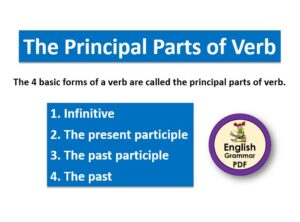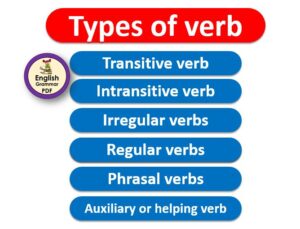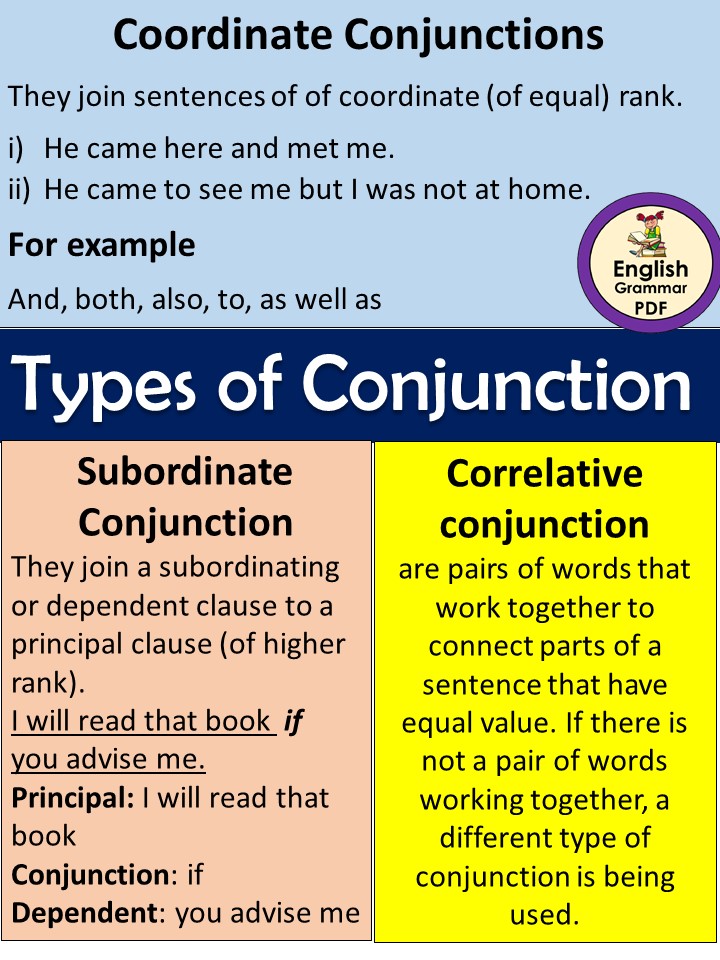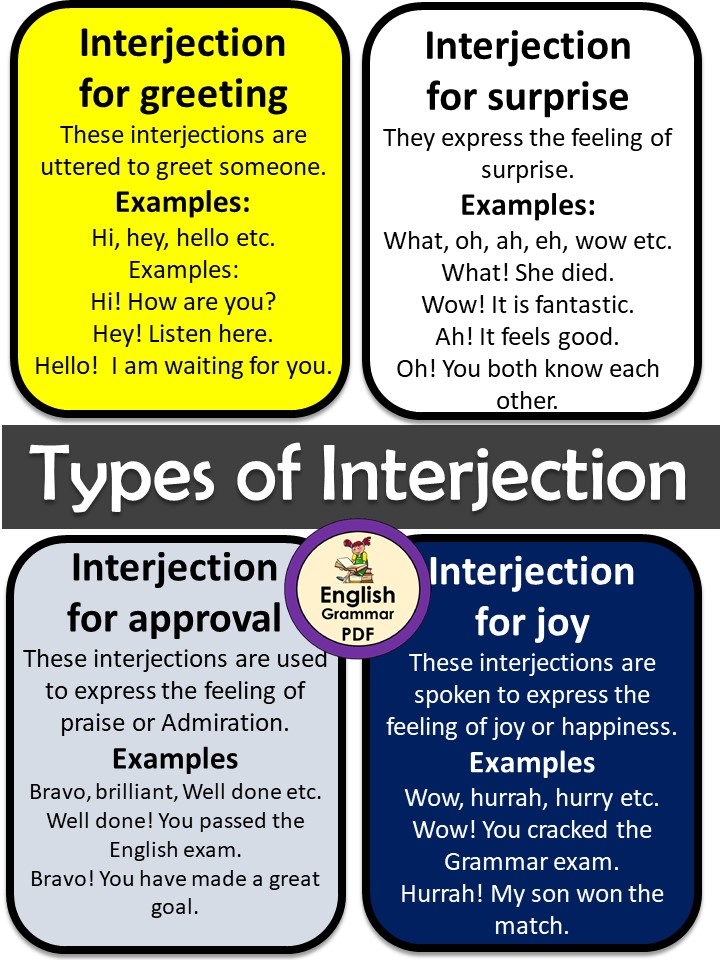Verb and Different types of Verb
Verb is one of the major grammatical groups, and all sentences must contain one. Verb is the name of an action (do, break, walk, etc.) or a state (be, like, own). Here we will discuss different types of verb with examples and daily used sentences.
The verb tense shows the time of the action or state. Aspect shows whether the action or state is completed or not.
Voice is used to show relationship between the action and the people affected by it.
Mood shows the attitude of the speaker about the verb, whether it is declaration or an order.
Verbs can be affected by the person and the number to show the agreement with the subject.
The Principal Parts of Verb
What are the principal parts of verb? The 4 basic forms of a verb are called the principal parts of verb. They are:
- Infinitive
- The present participle
- The past participle
- The past

Types of verb
Different types of verb are described here with their PDF.
- Transitive verb
- Intransitive verb
- Regular verbs
- Irregular verbs
- Phrasal verbs
- Auxiliary or helping verb

Now we will discuss one by one verb and its types.
Transitive verbs
What are transitive verbs? A verb is transitive if the action does not stop with the doer, but passes from the doer to an object.
She writes a letter.
Some common transitive verbs are; love hate, eat, drink, advise etc.
Intransitive verbs
What are intransitive verbs? A verb is intransitive when the action stops with the doer and does not pass from the doer to an object.
For example: We sleep.
Some common intransitive verbs are; fall, go, appear, laugh, weep etc.
Irregular and Regular Verbs
What is the difference between irregular and regular verbs?
An irregular verb is one that does not take the -ed ending for the Past Simple and Past Participle forms. Some irregular verbs do not change; (put, put, put,) while others change completely; buy bought bought etc.
Irregular verbs fall into 5 categories:
- Base Form
- Past Simple
- Past Participle
- 3rd Person Singular
- Present Participle / Gerund
A regular verb forms its past and past participle forms by adding ‘d or ed’ to the first principal part.
e.g. Use, used, used
Phrasal Verbs
A phrasal verb consists of a verb and a preposition or adverb that modifies or changes the meaning; ‘give up’ is a phrasal Verb that means ‘stop doing’ something, which is very different from ‘give” The word or words that modify a verb in this manner can also go under the name particle.
Phrasal verbs can be divided into groups:
Intransitive verbs
They don’t take an object.
They had an argument, but they have made up now.
Inseparable verbs
The object must come after the particle.
They are looking after their grandchildren.
Separable verbs
With some separable verbs, the object come between the verb and the particle.
For example
The quality of their work sets them apart from their rivals.
With some separable verbs, the object can before or after the particle, though when a pronoun is used it comes before the particle.
For example
Tum it off.
Turn the TV off.
Turn off the TV.
Inchoative Verbs
An inchoative verb is a verb that describes a change of state.
e.g. The apples ripened. (The apples became ripe.)
e.g. He has aged a lot, (He has become old.)
Auxiliary or helping verbs
An auxiliary verb is that verb which helps to form a tense or mood of some other verbs.
- I can (incomplete) ; I can go (complete)
- I have (incomplete) ; I have pen (complete)
What are the types of auxilary verbs? Auxiliary verbs are of two types.
- Is, am, are, was, were, has, have, had
- Do, does, did, will, would, shall, should, may, might, can, could, must, ought
DESCRIPTIONS OF ENGLISH AUXILIARY VERBS
here we will describe some auxiliary verbs.
(DON’T, DOES, DO, and DOESN’T) are used for questions and negatives in the Present Simple Tense, and ‘DID’ and ‘DIDN’T’ are used in the Past Simple Tense.
‘BE’ is used with the Present Participle in Continuous (Progressive) Verbs. It is also used with the
Past Participle in the Passive.
‘HAVE’ is used with the Past Participle to form the Perfect Aspect
May implies permission, doubt or possibility:
e.g. It may rain tonight.
May I use your pen?
Might is the past form of “may” but it does not necessarily represent past time. Often it implies more doubt than may:
e.g. If the clouds are salted, the rains might come.
Can is used is express ability:
e.g. He can do this work.
Could is the past form of can but it does not necessarily represent past time. Often it implies a more uncertain condition than “can”.
e.g. She could refuse, but she never does.
Should is the past form of shall. It is used in sub-ordinate clauses after in case and sometimes after it:
e.g. I shall get some money in case brother comes.
If you should see Ali, give him my regards.
It is also used in past sentences with so that and, in order that:
e.g. He turned the stereo down very low so that he should not disturb him.
You can download the pdf of 6 different types of verb.


